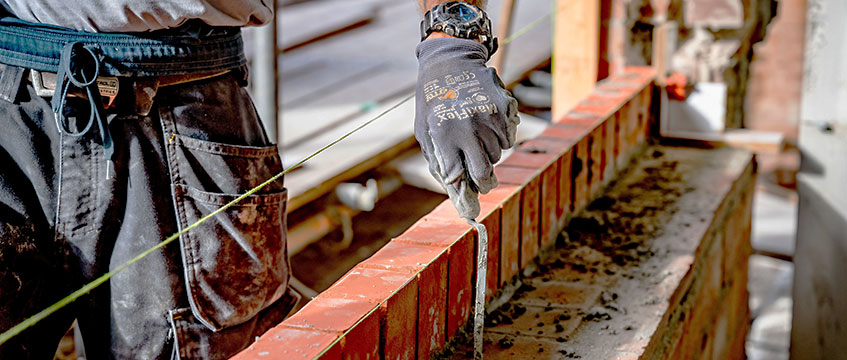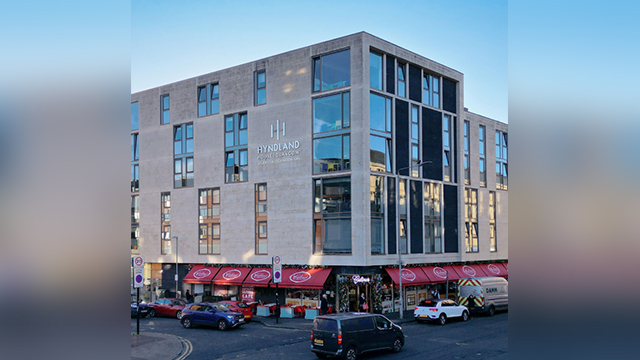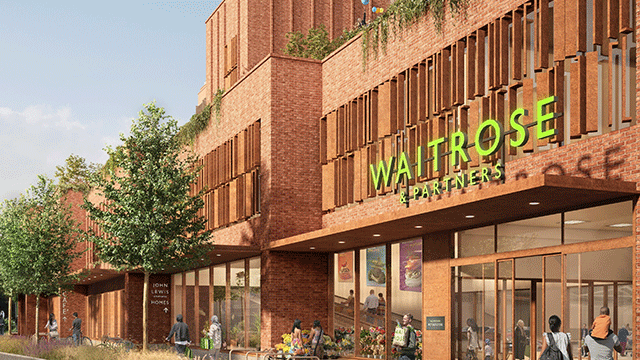The tranquil field on the outskirts of Milton Keynes will soon become a battleground. Over the next nine months, the nine shortlisted developers for a flagship government housing policy will vie to win the right to build 145 homes on the 3.3ha site.
The site, plot 6 of English Partnerships’ Oxley Park development area in Northamptonshire, is one of 10 sites selected for the government’s stated objective of building homes for first-time buyers for less than £60,000 each. The Design for Manufacture project, launched after deputy prime minister John Prescott challenged housebuilders to come up with a truly affordable 820 sq ft house in 2004, is now at Stage 2.
Teams and designs created
The shortlisted bidders, whittled down from 33 entrants, have put together their teams, and produced designs. For the government, the fierce competition over who will develop Oxley Park and the other sites (see map, p34) proves that its project has been a success.
But for critics of the scheme, the detail shows that Prescott’s promise of thousands of £60,000 homes is made of piecrust.
The shadow secretary for local government and communities, Caroline Spelman, is on the war path. Some of her comments have the hallmark of politicking. The choice of sites, for instance, has come under fire, either because, like Oxley Park, they are greenfield and should be protected from Prescott’s bulldozers, or because they are brownfield sites, which Spelman condemns as “contaminated”.
Oxley Park has also been singled out by the Tory opposition because, rather unfortunately, it is located next to the category A prison, HMP Woodhill. But of greater concern is the fact that the reality of the “£60,000 home” is quite different from the myth.
Although it has never explicitly claimed as much, the government has allowed the public to believe that the Design for Manufacture initiative will lead to thousands of new homes hitting the market with a £60,000 price-tag.
“The public are being spun a line,” claims Spelman. “The government claims it is providing starter homes to sell at £60,000. Nothing could be further from the truth.”
Spelman has a point. The £60,000 figure so often quoted by EP and Prescott is the construction cost per unit, not the eventual sale price or the total cost to the developer. As one of the judges – executive director of the Building Cost Information Service, Joe Martin – says: “The building cost doesn’t impact directly on the sale cost. The market value will be what people are prepared to pay for it.”
Also, a total of just 1,000 such homes will be built. Of those, only 30% will have to be built for £60,000 each, with no limit on construction costs being applied to the remainder.
Added to that, only 30% of the total will be aimed at the cash-strapped first buyer market and designated as affordable housing – 20% less than the amount insisted on in London and other areas of low supply. But EP is keen that the 30% classed as affordable and the 30% built for £60,000 each should not be the same, stating they “will be a mixture of homes from different price categories”.
The rest will be sold at market prices, meaning that most, especially those in London, will cost far more than £60,000.
On the Oxley Park site, only 44 homes will be affordable, with 101 being sold at market prices. Whether these affordable homes will be built for £60,000 apiece depends on the bid put together by each consortium.
But while the expectant key workers may be dismayed, developers could also be disappointed by the hidden costs involved.
First, the £60,000 price-tag does not include what the government calls “site abnormals”, namely section 106 costs and consultancy fees. Also, the £60,000 cost is possible only because it does not include the price of the land. But that does not mean that the developers will get the land from EP for nothing. EP has refused to give indicative prices and the consortia have been told to ignore land costs in their bids for each of the sites. By how far the hidden costs will exceed £60,000 will be revealed only when the developers for each site are chosen in 2006.
Top: Middle: Bottom: Above: Right: Top left: Top right:. Above:
|
|
Northern Edge from Three Rivers Housing Group, the Yorkshire Housing Group, the South Yorksihre HA and the Tees Valley Housing Group. Mackellar Architects-led design, assisted by Urban Salon, Metek, Van Elle, Gross Max and Atelier Ten |
|
|
Westbury Homes, its subsidiary Space 4, and timber frame maker Stewart Milne. |
|
|
Geoffrey Osborne, with design by Baily Garner and manufacturing by Innovare Systems. |
|
|
The SIXTYK Consortium is led by Crest Nicholson and building products group Kingspan, and includes Sheppard Robson, Davis Langdon, Arup and McFarlane Wilder. |
|
|
The George Wimpey bid is designed by the Richard Rogers Partnership, and includes timber self-build specialist Guildway and steel frame producer Metek. |
|
|
Main contractor William Verry has teamed up with modular homes manufacturer WeberHaus |
|
|
Consortium members are Barratt Developments, Advance Housing, Midsummer Housing Association, HTA Architects as well as Terrapin International in a jv with Advance Housing. |
|
|
the Countryside Consortium comprises Countryside Properties, The Hyde Group, the Acton HA and the Metropolitan HT with design by Presentation and PCKO Architects. It also includes Walker management, Polish pre-fab specialist Buma Free-dom Polska SA and The Homes Factory |
|
|
Redrow has created its bid in-house, using its own economy housebuilding teams. |
|
|
|
Prospective developers for the 10 sites below will have to contend with remediation, possible gas leaks, bats, slow worms, and fears about escaping prisoners |
|
1 Oxley Park, Milton Keynes A 3.3ha greenfield site on EP’s 26ha site. 145 homes wanted, only 44 of which need to be built for £60,000 or less. The scheme will face opposition as it is next to HMP Woodhill, which holds “the most disruptive” prisoners. Infrastructure will be supplied by neighbouring schemes. Bidders: B; CC; GO; GW; and R. 2 Upton, Northampton 165 homes wanted on this 3.3ha greenfield site, part of a 43ha EP-owned development area. But only 22% will need to be affordable and only 30% will need to be built for less than £60,000. Bidders: B; R; and S. 3 Allerton Bywater Millennium Community, near Leeds A 3.2ha slice of a 26ha site owned by EP. 86 homes wanted. The site may be difficult as it was formerly a mine, with “treated mine entries with no-build zones” and “gas protection measures will still be required”. More worrying is that the “site is sold in its existing condition with no warranty as to its fitness for use for any purpose”. Bidders: B; GW; NE; R; and W. 4 Former Renny Lodge Hospital, Newport Pagnell 50-60 homes wanted on this 1.5ha site, with under a third designated as affordable. The former NHS maternity hospital, which is in a flood risk area, is now owned by EP. Developers must also pay for an extension to the link road. Bidders: B; CC; GO; S; and WV. 5 Horns Cross, Dartford This former Territorial Army base has planning permission for 37 homes in a two-storey scheme. Only 11 of those would need to meet the £60,000 criterion. Developers may also have to provide a doctors’ surgery. Bidders: CC; GO; S; and W. 6 School Road, Hastings This 0.23ha school playground, owned by the South East of England Development Agency, has space for only 12 flats. Site is ready “save for relocation of slow worms”. Bidders: GO; S; W; and WV. 7 Linton Hospital, Maidstone 120 homes wanted on EP-owned 3.6ha site, which needs remediation. The site surrounds a GII listed church in the village of Coxheath. Bidders: B; CC; GW; R; S; and W. 8 Park Prewett Hospital, Basingstoke The brief states that 130 homes can be built on part of the 75ha former mental health hospital site, now owned by EP. Bidders: CC; R; S; and W. 9 Rowan site, Merton, London The plan permits 179 homes at the 6.05ha former school. The school building has to be converted and 2.5ha must remain as open space, with compensation payable for the loss of playing fields. The plan also says there are “bats on site”. Bidders: CC; GW; S; and W. 10 TA site, Aylesbury Vale This EP-owned 1.45ha former Territorial Army base could be developed as 80 homes. However, the site is opposite “a former landfill” and, before construction could begin, “gas mitigation scheme/works would need to be undertaken”. Bidders: B; CC; GO; GW; S; W; and WV. KEY: B Barratt; CC Countryside Consortium; GO Geoffrey Osborne; GW George Wimpey; NE Northern Edge; R Redrow; S SIXTYK; W Westbury; WV William Verry |










